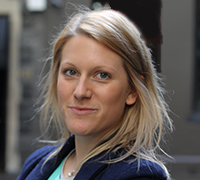We rank highly on money smarts. Test yourself here


Getty
About two in three Australians can understand their financial position, and those with the best understanding – predictably – are “wealthy [or] well-educated”, according to new research.
New data in Standard and Poor’s Ratings Services Global Financial Literacy Survey revealed worrying rates of financial illiteracy across the globe, and huge disparities between top- and bottom-performing countries.
But happily, Australians proved to be among the top achievers.
• Nola, one of last four northern white rhinos, dies
• Leyonhjelm supports ‘no jab, no pay’ legislation
• Belgium terror raids result in 16 arrested
The economically prosperous Scandinavian nations, Norway, Denmark and Sweden, filled out the top three in terms of the highest rates of financial literacy – 71 per cent of the population.
Australia made it into ninth place at 64 per cent, behind Israel, Canada, the UK, Netherlands and Germany.

Just 13 per cent of people in Yemen are financially literate. Photo: Getty
At the opposite end of the spectrum was Yemen, with only 13 per cent of the population considered financially literate, while Bangladesh – 12 places above Yemen – recorded 19 per cent.
Globally, it equated to about two-thirds of adults being financially illiterate, with just 30 per cent of women and 35 per cent of men showing good financial understanding.
More than 150,000 adults in 148 countries were surveyed in 2014 for the report, and were tested on their knowledge of “four basic financial concepts”: risk diversification, inflation, numeracy and compound interest.
Finance can be a difficult topic to grasp, but improving individual literacy is a boon for future stability.
It allows individuals to make informed choices related to investing, borrowing and saving and make the most of every dollar.
According to the report: “Consumers who fail to understand the concept of interest compounding spend more on transaction fees, run up bigger debts, and incur higher interest rates on loans.
“They also end up borrowing more and saving less money.”
How financially literate are you? Take the quiz below
Risk diversification

The key to building wealth could lie in the way you invest your money, but what option is best? Photo: Getty
Suppose you have some money. Is it safer to put your money into one business or investment, or to put your money into multiple businesses or investments?
A: one business or investment
B: multiple businesses or investments
Inflation
Suppose over the next 10 years the prices of the things you buy double. If your income also doubles, will you be able to buy less than you can buy today, the same as you can buy today, or more than you can buy today?
A: Less
B: The same
C: More
Numeracy (Interest)
Suppose you need to borrow $US100. Which is the lower amount to pay back: $US105 or $US100 plus three per cent?
A: $US105
B: $US100 plus three per cent
Compound interest

Need some dollars? Smart banking choices could prove to be in your best interest. Photo: Getty
Question 1: Suppose you put money in the bank for two years and the bank agrees to add 15 per cent per year to your account. Will the bank add more money to your account the second year than it did the first year, or will it add the same amount of money both years?
A: More
B: The same
Question 2: Suppose you had $US100 in a savings account and the bank adds 10 per cent each year to the account. How much money would you have in the account after five years if you did not remove any money from the account?
A: Less than 150 dollars
B: Exactly 150 dollars
C: More than 150 dollars









